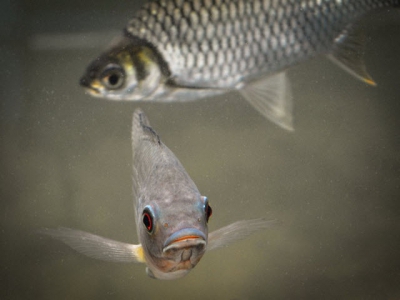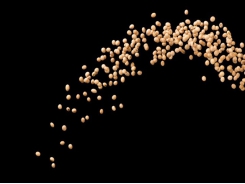Vegetable choline may boost tilapia growth, antioxidant status

Supplementing Nile tilapia diets with vegetable choline may support fish growth and performance along with providing clues to how that response is triggered, say researchers.
© GettyImages/panida wijitpanya
Researchers from the Federal University of Santa Maria, the University of the State of Santa Catarina and the University of Western Santa Catarina in Brazil examined the use of vegetable choline (VC) in juvenile Nile tilapia diets.
The team wanted to track the potential relationship between improvement of fish’s antioxidant/oxidant status and growth performance.
“Based on these evidences, the aim of the present study was to evaluate whether phosphoryl transfer network, as well as the improvement of antioxidant/oxidant status, can be considered pathways involved in the improvement of growth performance in Nile tilapia fed different dietary VC levels,” the researchers said.
They published their work in the journal Aquaculture.
The researchers found that supplementing fish diets with VC boosted fish growth and feed intake. Fish receiving larger amounts of the supplement had increased hepatic pyruvate kinase activity and those getting the highest level of supplementation had increased hepatic glucose levels and lower hepatic lactate levels.
Antioxidant levels in fish receiving the supplemented feed also were higher compared to those on a control diet, they said.
“VC supplementation can be an interesting alternative to increase growth performance of Nile tilapia fingerlings especially at levels of 800 and 1,200 mg VC/kg of feed, which were able to improve the hepatic energy metabolism and antioxidant/oxidant status and subsequently increased the fish growth performance,” they said.
Why choline use exploration?
In aquaculture, large numbers of fish can be raised in “biologically and economically efficient” systems, the researchers said.
Nile tilapia is a commonly raised species in aquaculture and production is anticipated to expand in several markets.
The industry has been exploring ways to support the increased production and improve growth performance of the species, they said. Strategies include supplementing fish diets with natural additives including vegetable choline.
“Choline has been identified as an important nutrient for production animals, including fish, being predominantly obtained from the diet,” they said. “Choline exerts in the body an important role for maintenance of structural integrity of cell membranes, cholinergic transmission, transmembrane signaling, and lipid and cholesterol transport and metabolism.”
Several previous studies have found that use of VC as a feed additive could have a positive influence on growth performance in rabbits, broilers and in Nile tilapia, they said. However, “the pathways involved in the improvement of growth performance remain unknown.”
Some data hints that low choline levels may decrease adenosine triphosphate (ATP) production, they added.
Tracing tilapia response to VC
“Our hypothesis is that phosphoryl transfer network, which is catalyzed by pyruvate kinase (PK) and adenylate kinase (AK), can be involved with the improvement on growth performance during VC supplementation,” the researchers said.
The phosphoryl transfer network plays a role during energy distribution and transfer, they said. It also maintains the balance between the consumption of ATP and its production.
“The PK is an irreversible enzyme of glycolysis pathway that forms pyruvate and ATP, exerting a fundamental role to suitable energy production in tissues with high energy requirements, [such] as liver,” they said. “On the other hand, AK is considered a facilitator of energetic communication between nucleus and cytosol through the reversible transfer of the γ-phosphate group to adenosine monophosphate (AMP), and consequent release of two molecules of adenosine diphosphate (ADP).”
Similarly, boosting fish’s antioxidant/oxidant status could be linked to better growth performance, they said. This was noted in an earlier study with red sea bream fed a diet with differing amounts of “Aspergillus oryzae fermented rapeseed meal.”
Another study found that adding amounts of VC to feed for juvenile Jian carp improved antioxidant levels in the liver, spleen and head kidney, the researchers said.
“Our hypothesis is that ameliorative effects on antioxidant status can be involved in the improvement on growth performance of Nile tilapia fed with VC,” they said.
Feeding trial details
In the feeding study, commercially available vegetable choline was added at differing levels to generate four diets, the researchers said. About 160 tilapia fingerlings received the trial diets for a 60-day period.
The basal feed included corn, poultry viscera flour, feather meal and soybean meal, they said. The VC was added at 0, 400, 800 and 1,200 mg/kg of feed.
At the end of the 60-day period fish were group weighed and fish performance and feed use parameters were established including weight gain, specific growth rate (SGR), feed intake, feed conversion ratio (FCR) and survival, they said.
Select fish were harvested to collect liver samples for analysis, they said. Samples were used to evaluate the phosphoryl transfer network, to measure hepatic PK activity, hepatic AK activity along with hepatic glucose, glycogen and lactate.
Lipid peroxidation levels (LPO) and branchial lactate dehydrogenase (LDH) activity also were measured as was antioxidant capacity against peroxyl radicals (ACAP), the researchers said. Protein content in liver homogenates also was established.
Results
Following 60 days on the trial diets, fish eating the feeds with 400, 800 and 1,200 mg/kg of VC had the highest weight gain, live weight, corporal length and feed intake, the researchers said.
“Regression analysis for total period (0–60 days) showed that best vegetable choline dose was 750, 731, and 797 mg/kg for feed intake, weight gain and body length, respectively,” they added.
However, hepatic PK activity was increased in fish getting the 800 and 1,200 mg/kg diets compared to those on the control, they said. Hepatic glucose also was higher for fish on the 1,200 mg/kg diet and hepatic lactate amounts were reduced compared to the control.
On the antioxidant side, hepatic LDH and LPO levels were reduced while ACAP levels were increased for fish on the 800 and 1,200 mg/kg diets when compared to fish in the control group, they said.
“At 60 days of experiment, the VC dose near 800 mg/kg of feed should be recommended for improving the fish performance,” the researchers said. “Moreover, 800 and 1,200 mg VC/kg of feed were able to improve the hepatic energy metabolism and antioxidant/oxidant status, which can be pathways involved in the increase of growth performance of Nile tilapia.”
Source: Aquaculture
Authors: M.Baldissera, C.Souza, B. Baldisserotto, F. Zimmer, D. Paiano, T. Petrolli, A. Da Silva
Có thể bạn quan tâm
Phần mềm

Phối trộn thức ăn chăn nuôi

Pha dung dịch thủy canh

Định mức cho tôm ăn

Phối trộn phân bón NPK

Xác định tỷ lệ tôm sống

Chuyển đổi đơn vị phân bón

Xác định công suất sục khí

Chuyển đổi đơn vị tôm

Tính diện tích nhà kính

Tính thể tích ao hồ



 Fish disease guide - Gyrodactylus Salaris
Fish disease guide - Gyrodactylus Salaris  Fish disease guide - Enteric Septicaemia of Catfish
Fish disease guide - Enteric Septicaemia of Catfish